Checking the brake fluid level
1. Check the brake fluid level in the reservoir. It must be between the marks "MIN" And "MAX" (slightly above the mark "MIN") (see fig. 1.37). If the level keeps dropping below the mark "MIN", check for leaks in the brake system and, if found, eliminate them. Check tightness and condition of all tubes and hoses. Check the condition of the tank, pneumatic and hydraulic units.
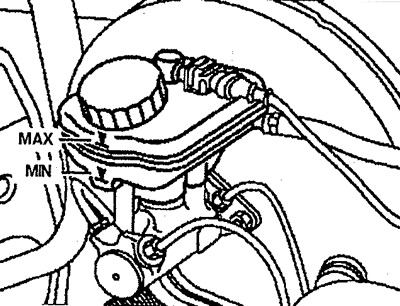
Pic. 1.37. Checking the brake fluid level.
Attention! Do not overfill the fluid level in the tank above the mark "MAX", this will cause excessive wear on the brake pads.
2. Correct fluid level.
Brake Fluid Replacement
3. Mark the fluid level in reservoir 1 using adhesive tape. If the reservoir is completely filled after changing the brake fluid, there is a risk of overflowing or overfilling, for example after changing the brake linings.
4. Reduce the brake fluid level in the reservoir by about 10 mm.
5. Connect drain hose (arrow) (see fig. 1.38).
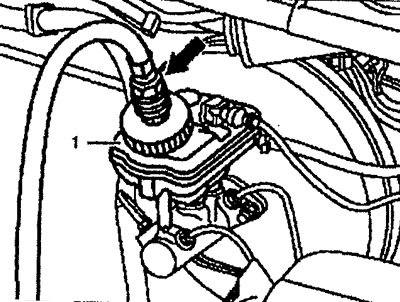
Pic. 1.38. Connect drain hose (arrow) to the tank.
6. Set the automatic brake force regulator to the full load position.
7. Connect the drain hose 2 to the brake caliper (see fig. 1.39).
8. Loosen the drain bolt on each caliper until fresh fluid flows out free of air bubbles.
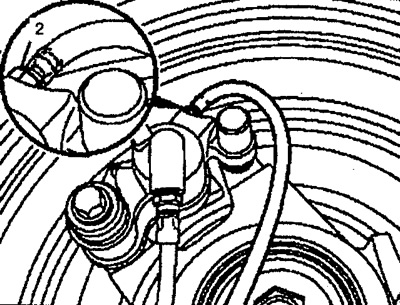
Pic. 1.39. Connect the drain hose to the brake caliper.
9. Change the brake fluid in the clutch reservoir using bolt 3 (see fig. 1.40). Loosen the drain bolt until fresh fluid flows out without air bubbles.
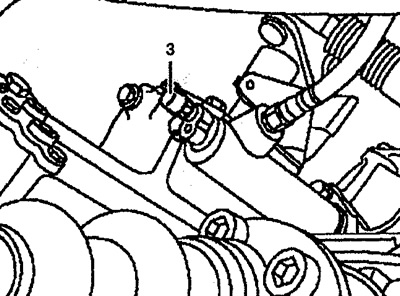
Pic. 1.40. Change the brake fluid in the clutch reservoir.
10. Set the automatic brake force regulator to its original position.
11. Disconnect drain hoses.
12. Adjust the fluid level in the reservoir.
Checking the thickness of the brake linings
Single tires
13. Check the thickness of the brake pads through the hole in the wheel disk (see fig. 1.41). Insert the feeler gauge into the hole until it stops and measure the thickness of the lining. The maximum allowable wear is 3 mm.
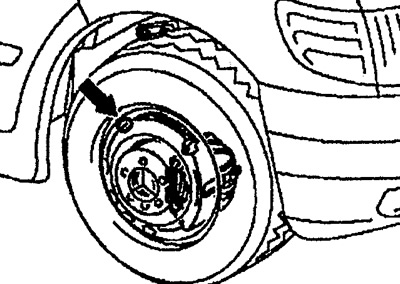
Pic. 1.41. Checking the thickness of the brake linings (single tires).
Twin tires
14. Check the position of marks A and B on the brake caliper when rotating relative to edge C (see fig. 1.42). A - a new gasket, B - the remaining gasket about 5 mm. This test is only a rough check. If mark B approaches mark C, a check must be made by removing the wheel.
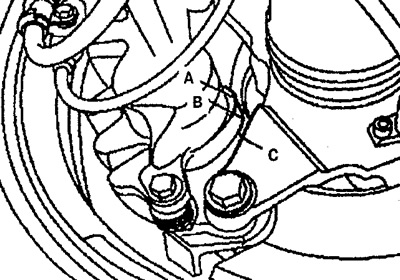
Pic. 1.42. Checking the thickness of the brake linings (twin tires).
